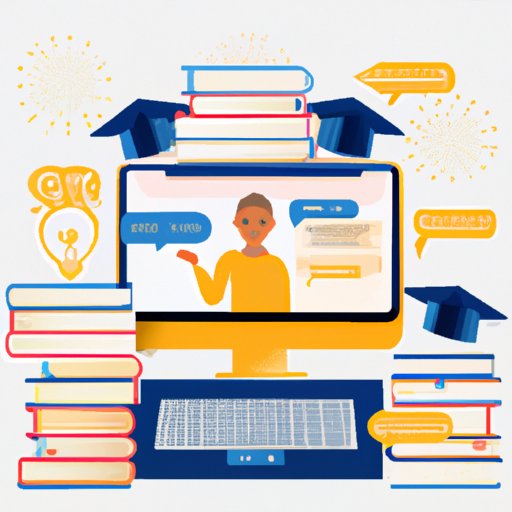Introduction
Technology has become an increasingly important part of modern society, with its applications in almost all aspects of life. In the field of education, technology has revolutionized the way students learn and how educators teach. From increased accessibility to educational materials to improved research capabilities and automated administrative tasks, the use of technology in education has opened up a world of possibilities for both students and teachers.

Increased Accessibility to Educational Materials
One of the most significant ways that technology has improved education is by increasing the availability of educational materials. Through the internet, students can access a wealth of information and resources that would otherwise be unavailable to them. Online libraries provide access to books, scholarly articles, and other educational materials, while websites such as Khan Academy offer free courses and tutorials on a variety of topics.
In addition, technology has also made it easier for students to access textbooks and other educational materials. With the rise of e-books and other digital formats, students can now purchase textbooks online at a fraction of the cost of traditional printed textbooks. Furthermore, many publishers are now offering digital versions of textbooks that can be accessed from any device, making it even easier for students to access course materials.
Improved Research Capabilities
The use of technology has also enabled students to conduct more efficient research. Search engines such as Google and Bing allow users to quickly find information on any topic, while specialized academic search engines such as JSTOR provide access to scholarly journals and articles. Additionally, students can now access online databases such as ProQuest, which provide access to millions of documents and publications.
Furthermore, technology has also enabled students to access information from any location. With the proliferation of mobile devices, students can now access educational materials and conduct research from anywhere in the world. This has allowed students to explore new topics and engage in research without having to be physically present in a classroom or library.
Enhanced Collaboration Opportunities
Technology has also opened up new opportunities for collaboration between students and teachers. Social media platforms such as Facebook, Twitter, and Instagram enable students to connect and share ideas with each other, while online discussion boards and forums allow for more in-depth conversations about topics. Additionally, technology also allows for remote collaboration, enabling students to work together on projects from different locations.
Virtual Classrooms and Online Learning Platforms
The use of technology has also enabled the development of virtual classrooms and online learning platforms. Virtual classrooms allow students to attend lectures and participate in discussions in real-time, regardless of their physical location. Similarly, online learning platforms such as Coursera and edX provide access to a wide range of courses and tutorials, allowing students to learn at their own pace and on their own schedule.
These platforms also provide students with a more interactive learning experience, with features such as quizzes, assignments, and simulations that help to reinforce the material being taught. Additionally, these platforms allow teachers to track student progress and provide feedback in real time, enabling them to tailor their instruction to better meet the needs of their students.
Increased Efficiency of Assessments
Another way that technology has improved education is by increasing the efficiency of assessments. Automated grading systems such as Pearson’s MyLab and Mastering allow teachers to quickly grade multiple-choice tests and essays, reducing the amount of time spent on grading. Additionally, these systems also provide immediate feedback to students, allowing them to identify and address areas of weakness.
Personalized Learning Experiences
Finally, technology has also enabled the development of personalized learning experiences. Through the use of adaptive learning software, course materials can be tailored to the individual needs of each student. Additionally, technology has enabled the development of personalized instruction, with teachers able to provide individualized attention and guidance to their students.
Automated Administrative Tasks
Technology has also streamlined the process of handling administrative tasks. Software programs such as Blackboard and Moodle make it easier for teachers to manage their classes and assign tasks to students. Additionally, technology has reduced the amount of paperwork associated with enrolling students in classes and tracking their progress.
Conclusion
In conclusion, technology has revolutionized the way students learn and how educators teach. From increased accessibility to educational materials to improved research capabilities and automated administrative tasks, the use of technology in education has opened up a world of possibilities. As technology continues to evolve, it will continue to play an ever-increasing role in the field of education.
(Note: Is this article not meeting your expectations? Do you have knowledge or insights to share? Unlock new opportunities and expand your reach by joining our authors team. Click Registration to join us and share your expertise with our readers.)
